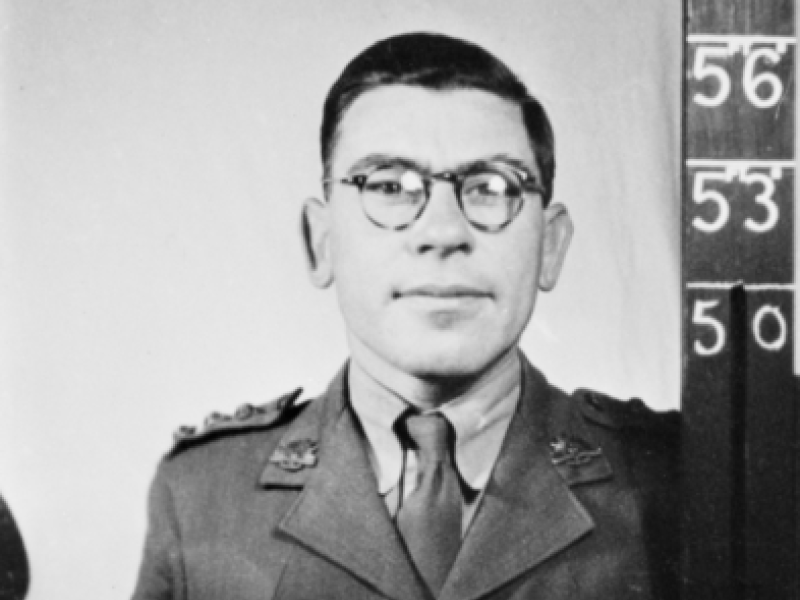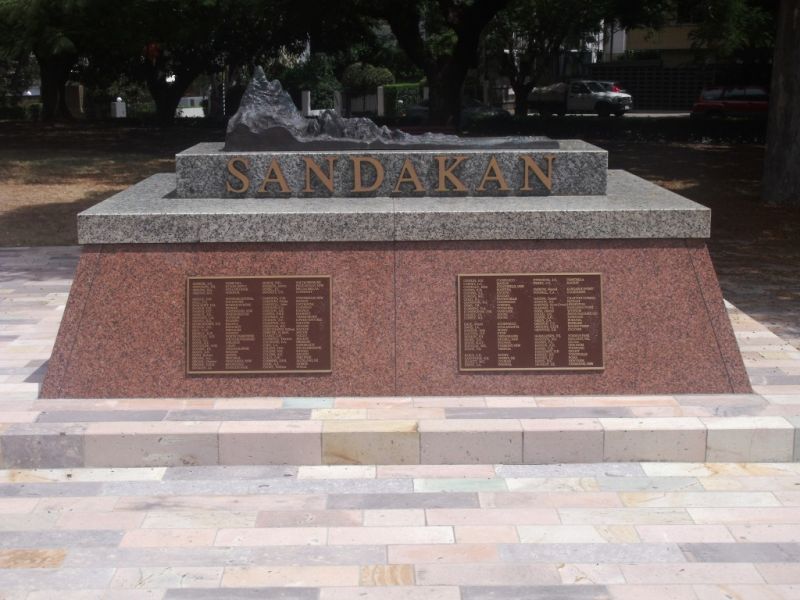Captain Domenic George Picone, Australian Army Medical Corps
Domenic Picone was born in Perth on 14 March 1909, the son of Anthony and Mary Picone.
Known as “Dom”, he graduated in Melbourne University in 1936. By the Second World War he was working as a GP in Cooroy, Queensland.
In February 1941, Picone boarded the Queen Mary, as part of the Australian Army Medical Corps in the 2/10 Field Regiment.
In December 1941, the regiment were carrying out manoeuvres in Malaya, when Japan entered the Second World War. Japanese troops quickly advanced through Malaya and by January had entered Johore. On 15 February, the garrison surrendered.
Picone was one of 1,500 prisoners transported from Changi on 7 July 1942 aboard the Ubi Maru, arriving in Sandakan Harbour a fortnight later.
At Sandakan, the men constructed an airfield and prisoner-of-war camps. Allied air raids began in October 1944. The airfield was bombed, including 60 grounded Japanese aircraft. On Christmas Day 1944, B24 Liberators finally destroyed the airfield.
Conditions at Sandakan were harsh. Punishments by the Taiwanese guards and Japanese soldiers included being confined to a cage, bashings and starvation.
Once, Captain Picone was caught taking a light bulb for his surgical hut to perform an emergency operation on a patient with a ruptured ulcer. He was beaten and forced to stand at attention for two hours while the patient lay bleeding in darkness on the operating table.
On 28 January 1945, the first forced march began from Sandakan to Ranau, 260km west.
470 prisoners left, carrying supplies for Japanese battalions relocating to the western coast. They were all malnourished or suffering serious illness, and had meagre rations for the trip. Those who collapsed from exhaustion or sickness were killed or left to die.
The next group of 536 prisoners, including Picone, left in late May, arriving at Ranau a month later.
On 9 June, another 75 men were sent. They were so weak that none survived 50km. Those left at Sandakan were killed or died of starvation and sickness. The camp itself was destroyed.
By the end of July, only 38 prisoners were left alive at Ranau. Two days after the Japanese surrendered on 15 August 1945, aircraft dropped leaflets with the news into the jungle. Only 15 prisoners were now alive.
On 27 July 1945, a Japanese guard warned Warrant Officer William Sticpewich that the Japanese were planning to execute the surviving prisoners. Sticpewich told four men, including Captain Picone, asking them to escape with him. All four turned him down.
Domenic Picone and the 14 other survivors of the infamous Sandakan Death Marches were shot by Japanese guards on 27 August 1945. The war had ended but Allied forces hadn’t yet arrived to liberate them.
Sticpewich survived his escape and later testified at the Tokyo war crimes trials in 1946.
Captain Domenic George Picone is also commemorated at the Labuan War Cemetery, Cooroy War Memorial, Sandakan Prisoner of War Memorial and Australian War Memorial Roll of Honour.
Duncan Beard, Military History Section

 Australian War Memorial
Australian War Memorial